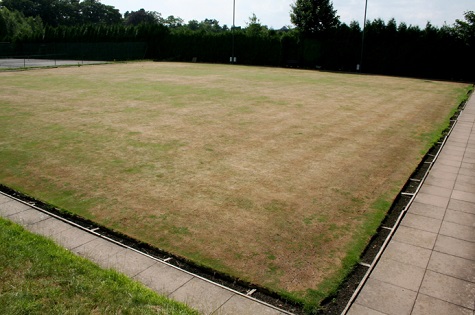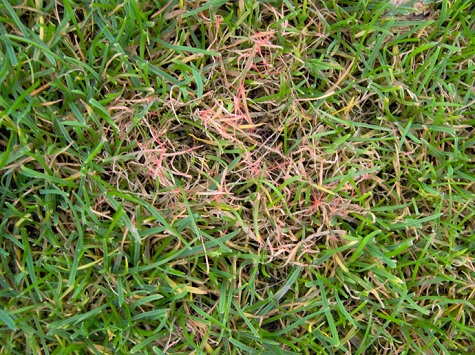
Andrew Turnbull MRes, director, SouthWest Agronomy Ltd (pictured above) says he has an inbuilt curiosity to understand how to build and manage turfgrass surfaces. This has resulted in a blend of wide and deep working/practical experience coupled with high level qualifications in plant sciences (BSC (Hons.) and Master of Research degrees).
He has worked "from the ground up" as a greenkeeper to golf course manager, construction agronomist, college tutor, and has pioneered the use of plant & soil biostimulants for managing turfgrass surfaces.
Over the course of 2023 there are some fantastic sporting events that will highlight the skills and dedication of grounds staff and greenkeepers, including the FA and Carabao Cup Finals, Guinness Six Nations, Epsom Derby, Grand National Festival, Cheltenham Festival, Wimbledon, Ashes Series, to name just a few.
These great sporting spectacles, however, hide issues facing those who prepare and manage turfgrass surfaces and I would like to highlight a few of these with a view to raising awareness and discussion so that change can come about. We can debate the relative significance and order of importance, but my top five concerns that are affecting the turfgrass industry in the UK is as follows;
1. Workforce and Skills Development
The availability of skilled labour is an ongoing challenge for the turfgrass industry in the UK. As experienced professionals retire, there is a need to attract and train a new generation of turfgrass managers. Developing training programs, promoting career opportunities, and emphasising the importance of continuing education are crucial for ensuring a skilled workforce that can effectively address the evolving needs of the industry. Answers could include:

2. Water Availability and Irrigation Restrictions
Water availability and irrigation restrictions are a significant concern for the turfgrass industry, particularly during periods of drought. The need to balance water conservation and maintaining healthy turf can be challenging and turfgrass managers are increasingly seeking alternative irrigation sources, implementing water-efficient technologies, and adopting best practices to optimize water use. Answers could include:

3. Pesticide Regulations and Integrated Pest Management
The tightening of pesticide regulations in the UK has restricted the use of certain chemicals in turfgrass management, and turfgrass professionals face the challenge of managing pests, diseases, and weeds while adhering to stricter regulations. This has led to an increased emphasis on integrated pest management (IPM) approaches that prioritize prevention, better timing of cultural practices, and biological controls to reduce reliance on chemical pesticides. Answers could include:

4. Climate Change and Extreme Weather Events
Climate and weather pattern changes poses significant challenges for the turfgrass industry in the UK. Increasing temperatures, changes in rainfall patterns, and extreme weather events such as droughts and heavy rains can impact turfgrass health, growth, and maintenance. Turfgrass managers need to adapt their practices to cope with these changing conditions and implement sustainable turf management strategies. Answers could include:

5. Sustainability and Environmental Impact
The need for sustainable turfgrass management practices is gaining prominence in the industry and we have been fortunate not to attract more attention from regulatory bodies such as the Environment Agency. For example, who has measured nitrates in drainage water from a top-class sports stadium? I have, and the results are not good. Nitrogen application to agricultural land is, by law, no more than 250 kg/ha, far less than most professional pitches receive and is bound to attract attention at some point. Balancing the demand for aesthetically pleasing and functional turf with minimising environmental impact is a priority if we, as an industry, are to show that we are responsible and proactive managers of the water and land environments.
Turfgrass professionals are exploring techniques such as low-input turfgrass systems (construction materials and design) and the use of organic/bio fertilisers to reduce reliance on synthetic inputs and minimise environmental footprint. Answers could include:
It is important to note that these issues are not exhaustive and may vary depending on the region and specific circumstances within the UK turfgrass industry.
It is crucial to recognise that addressing these issues requires a collective effort, collaboration, and ongoing research to develop innovative solutions that meet the specific challenges faced by the UK turfgrass industry. The role of the sport’s governing bodies, in partnership with the GMA and BIGGA, are vital to the sustainability and future of sporting events.
For example, golf is increasingly under pressure from some radical environmentalists who are lobbying for golf courses to be turned into rewilding projects. Their arguments are based on the effects of pesticides and fertilisers, which may seem bizarre and are wrong, but they have powerful and effective political lobbying activities. Is the ruling body for golf, the R&A, also actively lobbying and showing the importance of managing land for golf courses? It would help for them to let us know what they are doing, or to work with the industry and show their support in these matters.
Also, I don’t hear much from the four Football Associations of the UK about sustainability and grounds staff support. Yes, individual clubs have their carbon reduction and climate change aspirations but, are they published on a website just for public relations? A lack of actual data could open clubs to a sustained attack from environmental groups who publish misleading data on the impact of turfgrass based sports on the water and land environments.
The turf industry needs to show the government of the day that we are part of the solution to managing the effects of changing weather patterns and environmental issues, not a target for groups who want to push their own agendas. Only the sport’s governing bodies have the political size and clout to influence decisions made by government that have a direct effect on the jobs and careers of turfgrass professionals.
We need to be proactive and not naive in thinking everything is ok.